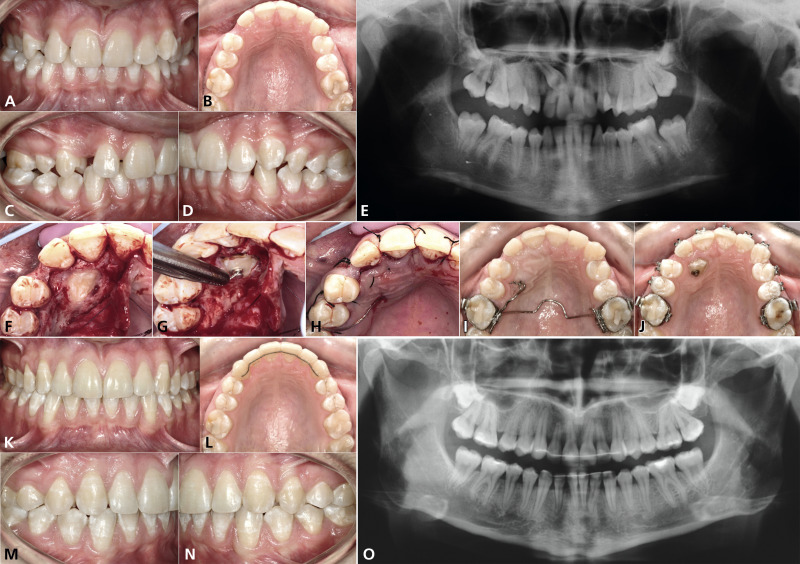Background
Impacted canines may pose a functional and an esthetic problem for patients and can
affect neighboring incisors. The aim of the study was to compare different treatment
methods and their outcomes for impacted maxillary and mandibular canines.
Methods
The authors included 102 patients with 118 impacted canines (82 maxillary and 36 mandibular
canines). Impacted canine were confirmed during clinical and radiologic examinations.
Eighty-five patients (83%) with 97 impacted canines started the treatment. The authors
analyzed treatment types and outcomes. Two maxillary and 4 mandibular canines were
scheduled for extraction.
Results
Orthodontic extrusion was used most frequently to treat impacted maxillary canines
(89%), whereas orthodontic extrusion and transalveolar transplantation were performed
most frequently in impacted mandibular canines (33% and 37.5%, respectively). The
treatment was successful in 96% of the maxillary and 95% of the impacted mandibular
canines.
Conclusions
Different methods were used for impacted maxillary and mandibular canines, but their
overall success rate was high.
Practical Implications
Successful outcome is determined via a well-planned and carefully executed orthodontic
and surgical treatment. Early diagnosis is pivotal in facilitating spontaneous canine
eruption and implementing transalveolar transplantation in a timely way.


